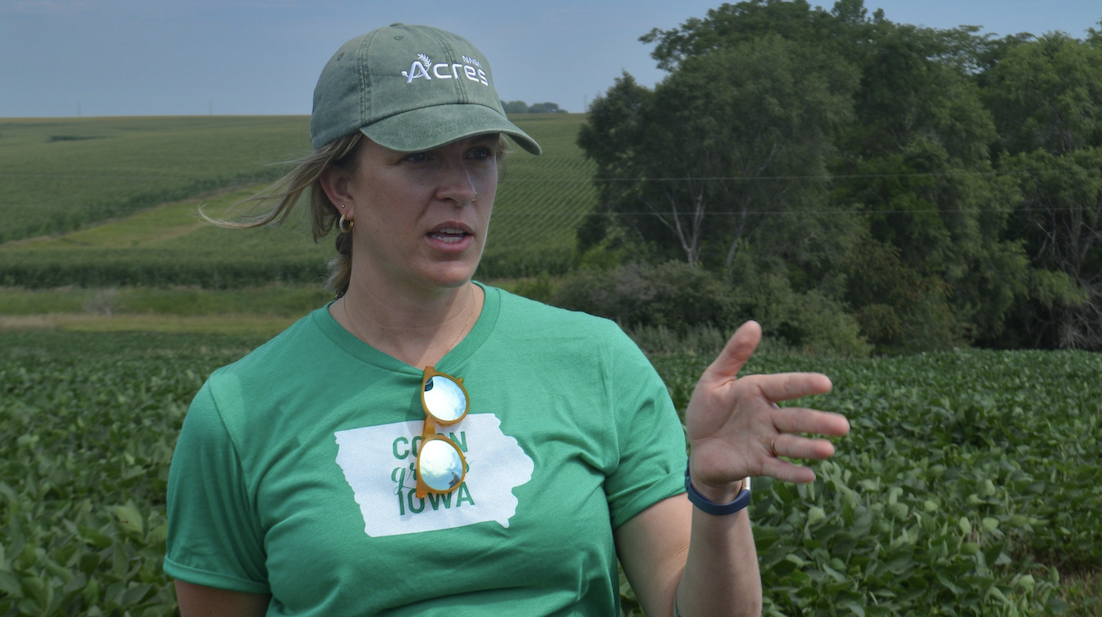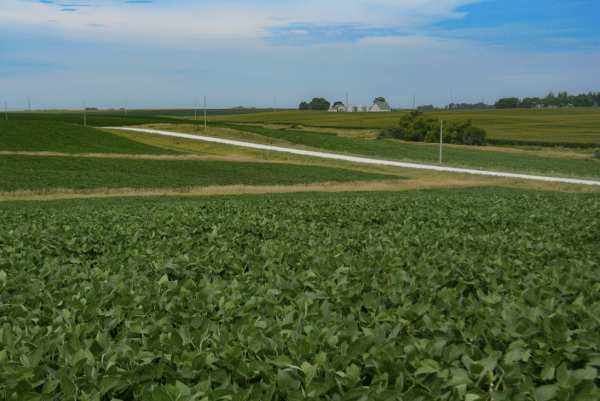General Mills, Unilever Partner With the Harvest Initiative to Advance Sustainable, Regenerative Agriculture Practices
General Mills and Unilever, global leaders in consumer food and packaged goods, have joined the Harvest Sustainable and Regenerative Agriculture (SARA) Initiative as its founding sponsors. Led by the University of Maryland (UMD) team behind NASA Harvest and NASA Acres - respectively NASA’s global and U.S.-focused agriculture and food security consortia - the initiative uses satellite data with other Earth observations (EO) and models to build a robust evidence base for SARA management practices, and provides science-based, pre-competitive good practices for quantifying environmental, economic, and social outcomes associated with their adoption.
Climate change, extreme weather events, and market disruptions are compounding stressors on global food systems. Governments, farmers, and corporations are considering SARA practices as mechanisms to confront these challenges, and while the principles of regenerative agriculture are generally agreed upon - maintain soil coverage, minimize soil disturbance, maintain living roots in the soil, rotate diversified crops, and incorporate livestock - the specifics needed to guide management transitions are missing. Any transformation that takes place on-farm needs to consider the social, economic, and environmental realities faced from hyper-local to regional scales and beyond.
Harvest SARA, with generous support from Unilever and General Mills, knows that satellites offer a unique perspective to help build this lacking evidence base at any scale and for any purpose, from farm to market to policy.
Seeing Agriculture From Space
Satellite data reveal fine details, frequently, over very large areas, with rich detail that our eyes cannot see. Freely and openly available satellite datasets like NASA/USGS Landsat 8 & Landsat 9 have provided images of every <0.25 acre (0.09 hectare) every ~8 days globally for the past several decades.
“Long-term site trials have provided important evidence for different management practices, but we still lack knowledge about both the state of adoption of these practices and their impacts in production agriculture settings over large regions,” said Alyssa Whitcraft, founding executive director of Harvest SARA and research professor at GEOG, also known for her role building NASA Harvest and later NASA Acres. “Now, we are seeing more studies that use satellite data that measure the state of adoption of different practices like cover cropping, reduced tillage, and grassed waterways over very large areas, and we also are seeing studies that use satellite data to map agricultural outcomes like crop yield over very large areas. But there have been comparatively fewer studies that link practices with outcomes, which we see as a missed opportunity.”
NASA Harvest funded studies led by Stanford University and the University of Illinois Urbana-Champaign that used satellite data to reveal the impacts of cover crops and reduced tillage on the yield of corn and soybean in the U.S. Corn Belt. These studies generated great interest across the private sector but opened even more questions about what was happening with other crops, with other practices, in other regions, and on other outcomes - including greenhouse gasses and other environmental benefits.
“Our work on regenerative agriculture is focused on catalyzing change at scale, though tracking changes in agricultural practices and outcomes at the landscape level poses a challenge,” stated Steve Rosenzweig, PhD, Principal Agriculture Scientist at General Mills. “Satellite imagery and modeling can help us monitor the adoption and impact of regenerative agriculture, and we believe the collaboration through Harvest SARA can help advance this critical scientific field.”
The demand signal became especially clear to Whitcraft, as private entities from technology providers to companies knocked on NASA Harvest’s door seeking answers. “It became clear pretty quickly that we needed to bring our expertise to this problem in a neutral way that was organized at the outset to benefit everyone equally. That’s why Harvest SARA as a 501(c)3 was born,” Whitcraft stated.

General Mills and Unilever Set To Amplify Adoption of Sara Practices
Harvest SARA is a public-good, multi-stakeholder, pre-competitive forum for researchers and private industry to come together to advance satellite-based tools, integrative methods, and knowledge about the adoption and impacts of sustainable and regenerative agriculture. While NASA Harvest established the Initiative and continues to lend scientific rigor to the work, financial support from Unilever and General Mills holds the potential to catalyze the widespread adoption of sustainable and regenerative agricultural practices, fostering increased resilience in farming systems, regenerating soil, reducing emissions, and enhancing profitability for farmers.
"We know from working with farmers, suppliers, and partners that sustainable and regenerative agriculture practices can make a positive impact at scale. However, the challenge of measuring this impact is considerable and despite impressive efforts from the agri-tech community, we still don't know which technology and data are best for a given crop in a given place,” said Andrew Wilcox, Associate Director of Business Operations Sustainability with Unilever. He added, “as a neutral and trusted science-based initiative, Harvest SARA can bring together the agri-tech community to create rigor and reproducibility in this rapidly developing field, helping to improve the accuracy, availability, and accessibility of key data on farming practices and impacts."
Harvest SARA has hit the ground running by establishing a working group of public and private sector modelers, soil scientists, statisticians, and agronomists to answer questions about the state of measurement and modeling of key agricultural outcomes like agricultural carbon fluxes under different management scenarios, and about optimization of soil sampling in an integrated satellite and in situ measurement system. The team is also working with Microsoft on developing novel computational systems that protect sensitive farm data and scientific intellectual property while also allowing the innovation that requires both to work in tandem.
There is still plenty of room, from farm-to-table, to collectively and meaningfully contribute to this effort to to accelerate scientific and technological innovation that helps farmers and ranchers meet the multifaceted challenges of sustaining and increasing production to feed 10 billion by 2050, providing livelihoods for more than 1 billion people worldwide, protecting and restoring land, water, atmosphere, and human health, and building resilience to global change and extreme weather events.
"We welcome all actors who are committed to accelerating the adoption of regenerative agriculture to join this initiative,” added Wilcox.
Media Contacts:
Inquiries about opportunities to partner with the Harvest SARA initiative can be directed to Alyssa Whitcraft at info@HarvestSARA.org.
All photos provided by the Global Land Programme.
This article was originally published on the Global Land Programme website.
Published on Tue, 02/13/2024 - 19:32


